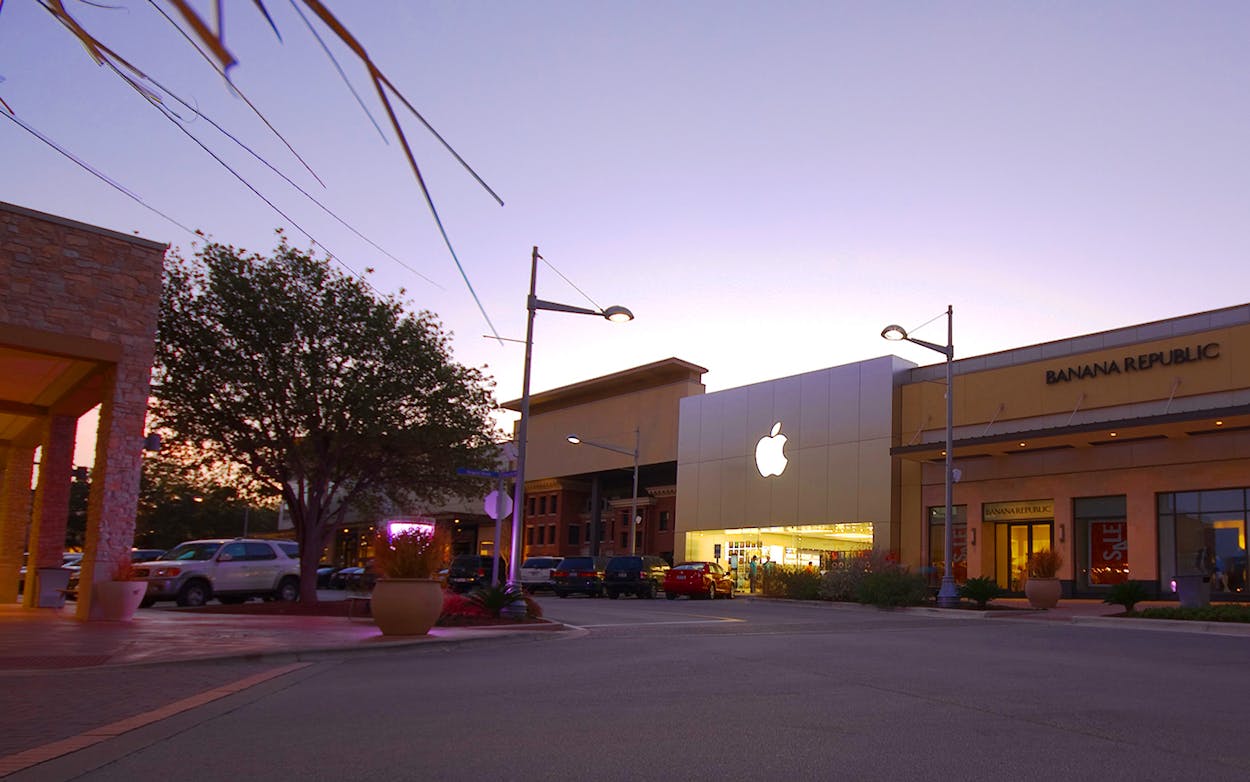The Domain has been a hit in Austin. The mixed-use development, located on the city’s north side, has attracted countless stores, restaurants, offices, and residents to its 300-plus acres. The high-end retailers that call the place home make for an impressive list: massive stores like Nordstrom, Neiman Marcus, Whole Foods, Apple, and Restoration Hardware, as well as uber-hip, digital-native boutiques like Warby Parker, Suitsupply, and Away luggage. The weekend bar scene is lively, the rent is high (a 780-square-foot apartment costs more than $1,350), and the crowds are never anything other than robust. Major League Soccer was convinced enough of its popularity to build a stadium nearby. Any list of recent Austin success stories would place the rise of the Domain near the top.
This week, more details came out about Indigo Ridge, a project in the Austin suburb of Cedar Park that’s expected to challenge the development for the area’s live/work/shop championship. The 155-acre project has a projected budget in the range of $1.5 billion and will—like the Domain—house retailers, restaurants, hotels, apartments, and offices. It’s not the only major mixed-use project planned for the region, either. The Grove, a 75-acre project closer to the heart of the city, has a master plan for “upscale homes, parks, shops, restaurants, and office spaces” as part of “a vibrant legacy project that will flourish beyond 100 years.” Bold future predictions notwithstanding, the project promises “local flavor, boutique shopping, specialized retail and convenient dining,” along with massive houses—single-family homes start at 2,800 square feet and a $1.125 million price point, and apartments start at just under $700,000—in what it says will be “the new centerpiece of Central Austin.”
The Grove isn’t the first major mixed-use development close to Austin’s center. There’s the seven-hundred-acre Mueller development, located on the site of the old Austin airport, which is home to an endless array of housing options, huge retailers (Best Buy, Home Depot, H-E-B), a children’s museum, and an ever-growing selection of bars and restaurants. Across town, Seaholm, located on the former site of the downtown Seaholm Power Plant and anchored by Trader Joe’s, features apartments with rent as high as $3,374 for a five-hundred-square-foot studio. The Triangle, one of the city’s earlier mixed-use developments, located less than a mile from the site of the Grove, features apartments, restaurants, and retailers. On East Riverside, relatively affordable apartments (a three-bedroom unit at the Mesh runs less than $2,000) that house primarily families and students are expected to be replaced by yet another mixed-use project full of upscale apartments, shops, and retailers. Highland, on the site of the former Highland Mall, is anchored by Austin Community College—an unusual primary occupant for a mixed-use project—with luxury apartments planned atop retailers, restaurants, hotels, and office space. (Both the Grove and Highland require 10 percent of rental units to be made available as affordable housing to qualifying tenants.)
Not all of these projects are created equal, of course. There are valid concerns about the plans for East Riverside, where families’ apartments will likely be replaced by properties with rents they can’t afford. Mueller and Seaholm, built on previously nonresidential lots, don’t prompt the same concerns about displacement. The proposals for the Grove involved a two-year battle between the neighborhood—which consists of wealthier homeowners than the families renting on Riverside—and the city, which ultimately made clear that even Austin’s more affluent residents don’t wield much power in the face of these developments.
These projects have seen mixed results. Mueller’s large residential swaths and Seaholm’s proximity to downtown Austin have helped them succeed; the Triangle has struggled to maintain commercial tenants—its anchor, an OfficeMax, closed last year, as did two key restaurants—suggesting that mixed-use development, even in a prime location, isn’t a license to print money.
That makes sense, because there are limits to how many projects of this nature a city can support. The Domain and Mueller can coexist because they serve different needs—the Domain is for people who want to rent an apartment in the mall; Mueller is for people who want to walk to a sports bar from the home they own—but it’s less clear whether projects like the Grove or Indigo Ridge are going to prove sustainable. A certain class of retailer reliably attracts people to a development—Nordstrom is a good anchor; OfficeMax is not—and the sheer number of these projects suggests that Austin may be nearing its saturation point. How many Apple Stores and Restoration Hardwares does a city the size of Austin actually need?
We’ll see what becomes of the Indigo Ridge project, which is still in its early stages, or if the residents on East Riverside are able to preserve one of the few stretches of affordable apartments within the city’s urban core. It’s possible that the Grove will become everything the developers dream of and that a hundred years from now, the great-grandchildren of the people buying houses there will continue to stroll under the live oaks, but it’s also possible that as each of these projects are competing for the same retailers, the same customers, and the same tenants, the city will have too many similar mixed-use developments. If that’s the case, the prospects for their future may be mixed too.








